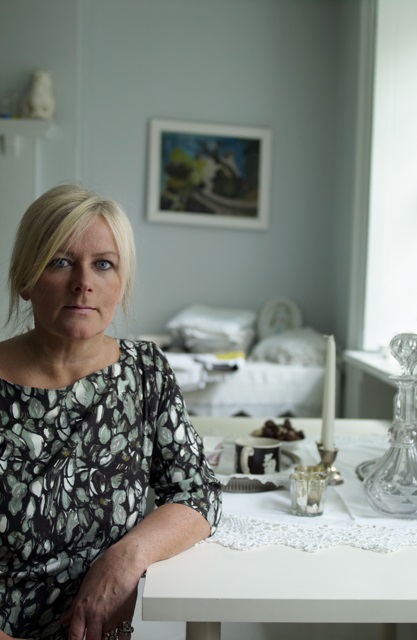
The Pearl in the Ice: A Q&A Interview with Cathryn Constable
Best known for her award-winning novel The Wolf Princess, Cathryn Constable’s latest novel is both a realistic, historical story and a magical folk tale. She talks about The Pearl in the Ice here.
The Pearl in the Ice mixes real historical events and a strong sense of place with myths and legends. Where did the idea come from?
I knew for a long time that I wanted to write something about the sea: it feels like an unknown realm. And I had been thinking about mermaids and selkies and how I might write about them. I didn’t just want to do a retelling of a myth or fairy story, though. I began to wonder if it would be possible to use the techniques of realism to explore the opacity of a myth. Why not treat a mysterious sea creature as an historical fact?
Can you tell us a bit about the pinboard you keep as a help to writing the story?
I think in pictures. So although I make loads of notes as I’m thinking about a new story, I love to find images that suggest the setting or mood of the story I’m creating. It’s one of the purely playful and joyous things I do. I’ll find pictures from all over the place, some of them don’t have to be accurate representations of a character or a place, but they will all share a mood. A lot of these details won’t go into the book, but it helps to feel expansive, to feel that anything is possible. I keep the pinboard up for as long as I’m writing the book. By the time you’re on the third or fourth rewrite, it helps to have that waterfall of images.

Though The Pearl in The Ice is very much a story of magic, you make sure that readers understand the cost of war. Was that always an important part of the book for you?
I started from a point of trying to understand how it must have felt to be a girl in a society which had very fixed expectations. Marina is clear that she doesn’t want to be boxed in by what is clearly defined as a ‘woman’s role’. She wants to choose her own future. But as the story evolved, I realized that it wasn’t just girls and women who were failed by this set-up. The trenches were the fate of an entire generation. So I wanted to show all this life, these characters, who we would come to know before understanding that they would not survive the war.
Is the figure of Miss Smith based on anyone living? Did you want readers to keep any admiration for her, though she’s definitely a bad lot?
Fortunately, for the peace of Europe, Miss Smith is not based on anyone living! But again, I felt that she was also a victim (sort of). She chose badly, but what were her choices? Like Marina, she wanted to defy society’s expectations of what a woman should do with her life: she wanted to make her own future. But she chose a sort of power that corrupts. I wanted her to be admirable because Marina, and the reader, has to be beguiled by Miss Smith. And I thoroughly enjoyed Miss Smith’s demise.
What’s your favourite scene in the book and why?
There are odd little snatches of details which were really interesting to me, little vignettes which might even get lost if one read too quickly. I loved writing Marina’s memories of her mother. Those terrifying boots her invalid mother wore, with all their clasps and catches… How Marina thinks she can remember her mother pushing her under the water as a baby or how her father took her to London Bridge and cried out for Marina’s mother to come and fetch her. And of course, I loved any time we met Miss Smith.
As with The White Tower, bereavement and loss is a huge part of the story. Is it something that you feel powers your writing?
I don’t mean to write that way, the sadness just seeps in. I think partly it’s just my personality. I loved Victorian Music Hall ballads as a child and would steal the book off the shelf and go and sit under the dining room table to read about poor orphans dying in the snow. And my parents both died while I was writing these last two books, so that grief bled into the story a bit. But I don’t set out to make a big deal of these things; I don’t want to write a book based on an ‘issue’. Also, I think we have enough sadness in real life, so the point of a book is not to wallow in that, but to give it a setting and a context that can find some meaning in that sadness. The meaning is usually kindness and love and so I hope that’s the feeling that comes across more strongly than sadness.
Your three children’s books have very different settings. Would you ever think about bringing Marina back in a sequel? (She’s such a wonderful character!)
I haven’t thought about bringing her back – although it’s an interesting idea. But I think there are so many books that I want to write that she may have to wait a while. Miss Smith, on the other hand…
Have you ideas for a new book?
Well, among the pictures on the pinboard is a black owl, a deserted tube station platform and an unnamed Eastern European street at dusk. It’s going to be a complicated story to unravel.
The Pearl in the Ice is published by Chicken House, 978-1912626519, £6.99 pbk




